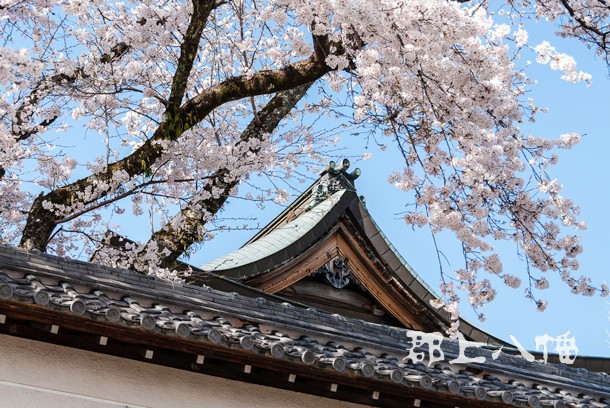
The presence of 17 temples and shrines has led to the nickname of "Little Kyoto", although visitors will typically find the temples and shrines of Gujo Hachiman much less congested than those in Kyoto.
Temples in Gujo Hachiman have long histories, and have played an important role in daily life for many years. Initially they served as part of the town's defence system. Today they serve the spiritual needs of residents and visitors alike, and some, like Gochiku In temple, also fulfil more mundane daily functions like keeping time.
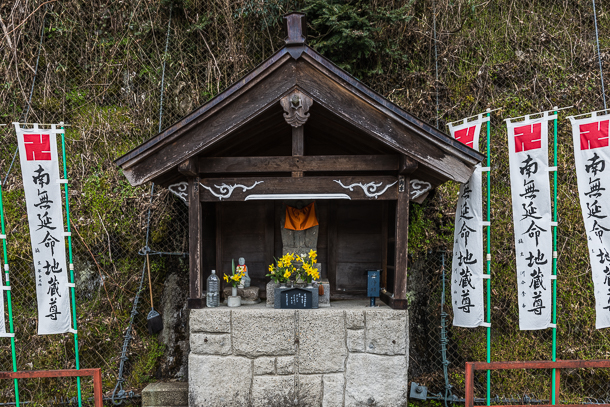
Walking through the streets of the town will reveal many different temples, shrines, and if you look carefully enough, some small street-side shrines not counted in the number above.
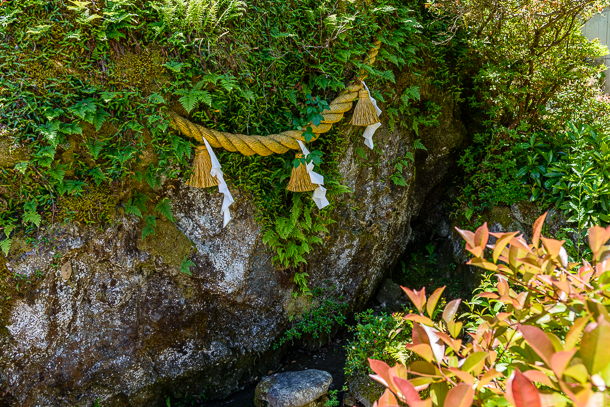
The town's shrines are especially colourful and interesting to visit in April when they put on the annual Spring Festival. For two days, beginning early in the morning and continuing until after sunset, three shrines mount parades that slowly wind their way through the town's streets. Two of the three parades meet on Miyagase Bridge on the evening of the second night, bringing the Spring Festival to a dramatic conclusion.
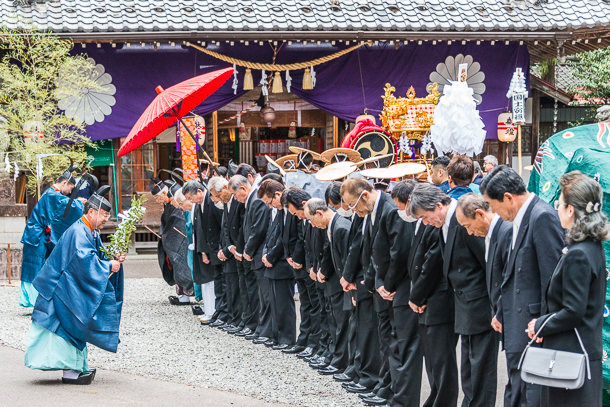
A small Shinto ceremony in front of Kishitrusogi Shrine to mark the Spring Festival
Many temples have beautiful gardens to enjoy throughout the year. Autumn is particularly colourful with displays of red and yellow leaves, while visitors in Spring will be rewarded with beautiful displays of cherry blossoms from late March until mid April.
![]() = Temples
= Temples
A map showing the locations of the most significant temples in Gujo Hachiman.
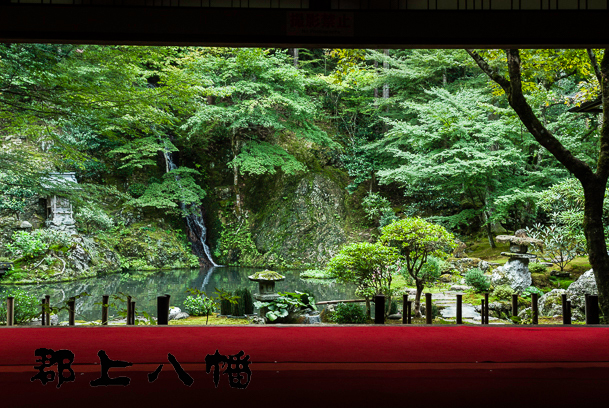
Jion Ji Temple was established in 1606 and this small, peaceful Zen temple features a stunning Japanese garden complete with pond and waterfall. The garden is especially beautiful in Spring and Autumn.
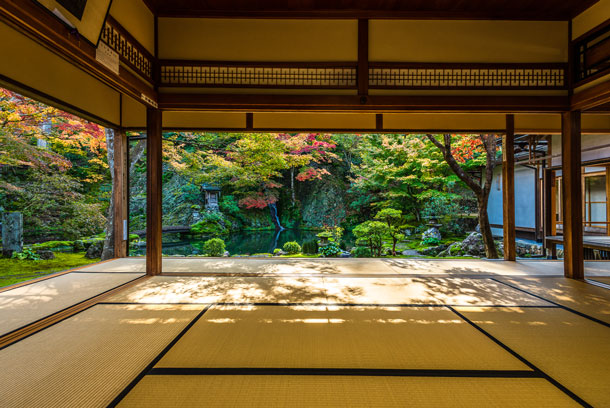
Admission: 500 JPY
Visit Jion Ji Temple's Official Website
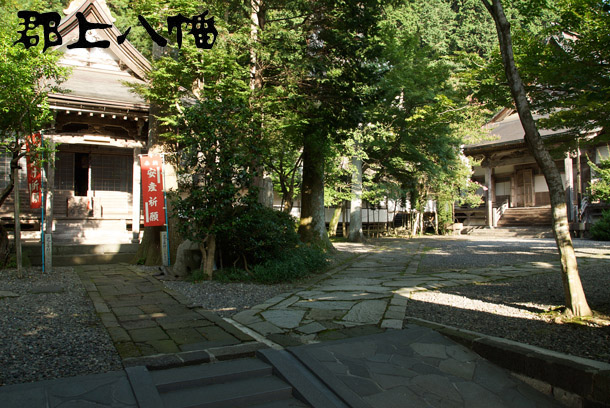
Across the Kodara River this temple, established in 1603, is a peaceful place to visit.
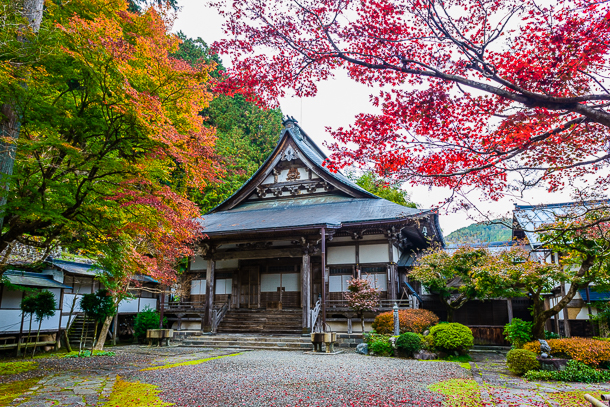
The main gate is its most notable feature, and was built in 1804. It is designated by the Japanese Government as a Tangible Cultural Property after surviving several major fires that destroyed the surrounding town, including the main temple buildings.
The main gate is especially beautiful in the autumn when the adjacent maple trees put on their annual autumn colour show.
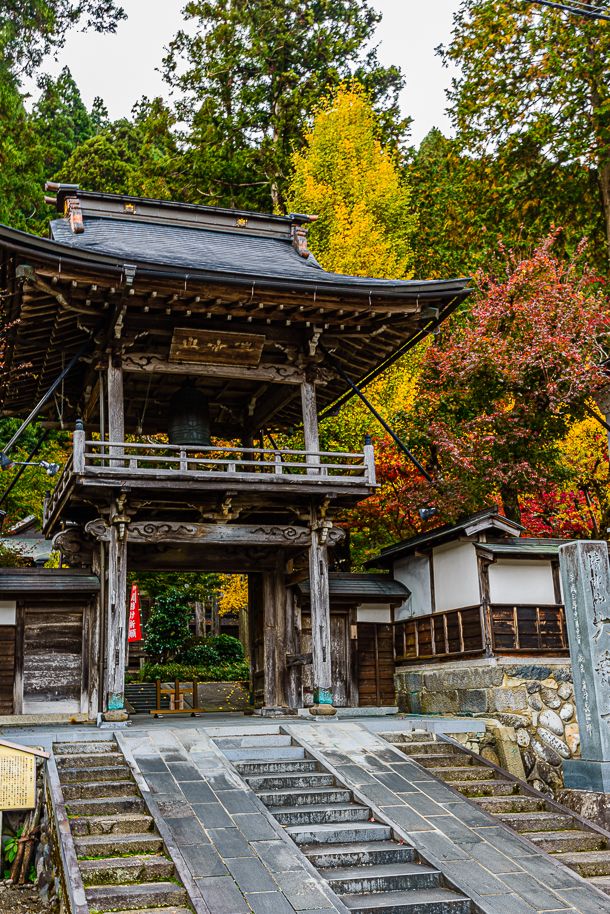
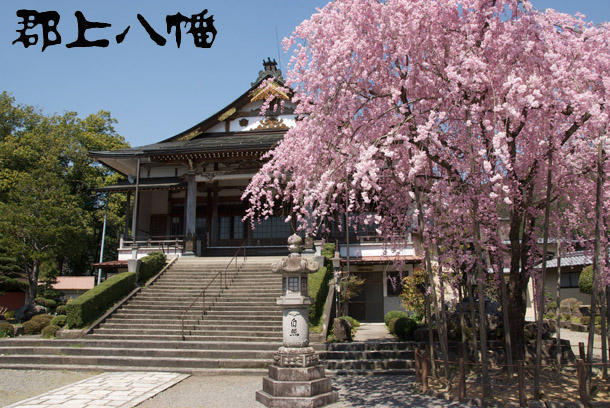
Cho Kyo Ji temple was established in 1601. Its principal feature is the graveyard which is home to the Endo family, including the first feudal lord of Gujo Hachiman's grave.
Located at the foot of Shokunin machi, the gate and temple buildings are part of the designated Important Preservation District of Historic Buildings area, together with the surrounding buildings on Kajiya machi and Shokunin machi.
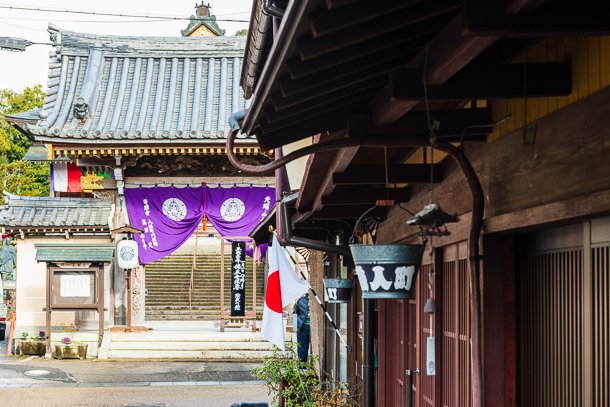
A view of the gate to Chokyou Ji temple decorated to welcome the New Year from Shokunin machi
Don't miss the spectacular cherry tree that blooms in the front of this temple in early April.
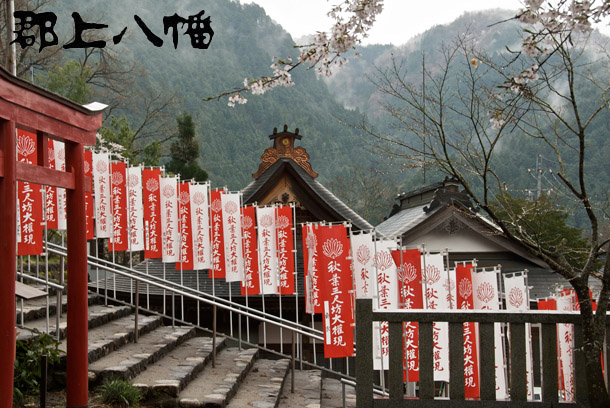
This Zen temple was established in 1521, below the Castle on the slope of Shiroyama.
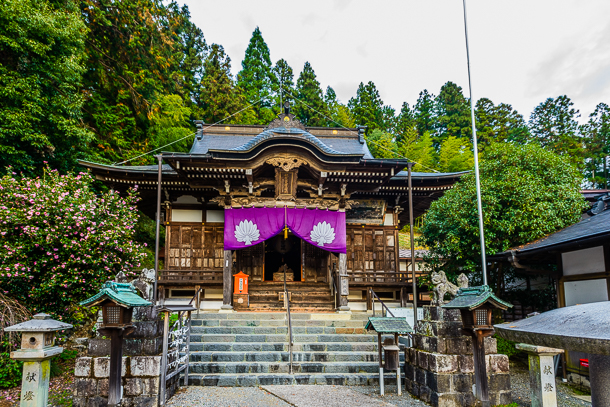
The bell at Gochiku In temple has rung four times per day for over one hundred years. Daily life in Gujo Hachiman is punctuated by the sound of this bell, without fail, at 6:00 AM, Noon, 6:00 PM and 9:00 PM.
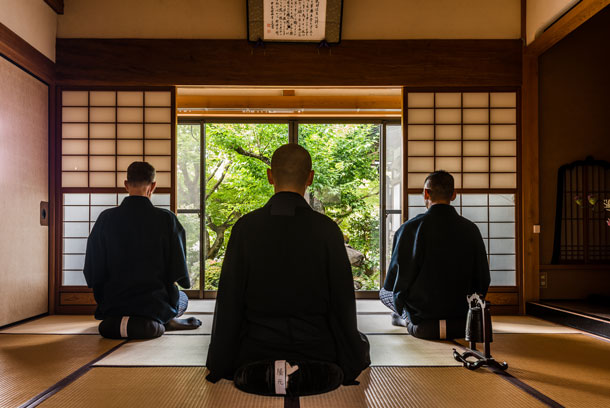
Early morning Za Zen Meditation at Gochiku In Temple
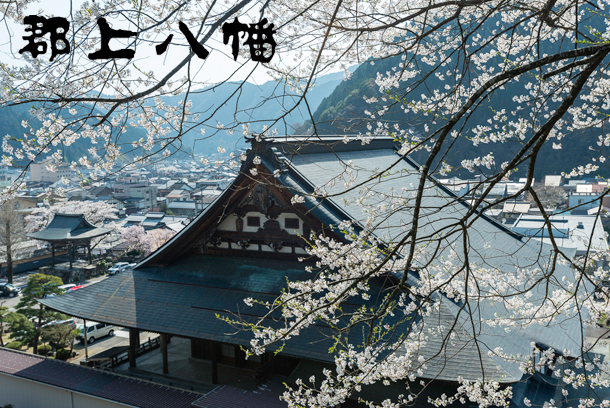
An Yo Ji Temple is the largest wooden building in Gifu Prefecture and also hosts a small museum. It was established in 1256.
The area in front of the temple, while often serving as a small parking area, hosts "mukashi odori" the old version of Gujo Odori which happens in late September on a date known only to locals.
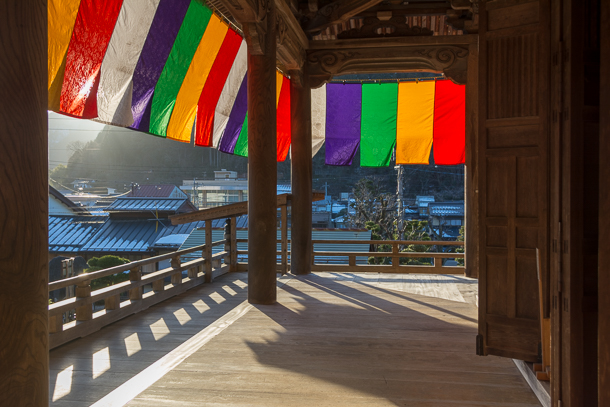
Like all temples in town , An Yo Ji is decorated for New Year and other holidays.
Although modest in external appearance, it is certainly worth taking the time to visit the newly redone inside.
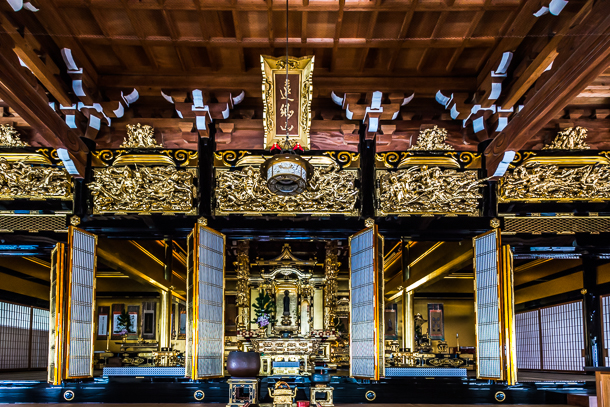
Temple museum admission fee: 300 JPY, (Closed Thursdays)
Visit us in person:
Kinenkan Tourism Centre
501-4222
520-1, Shimadani,
Hachiman Cho,
Gujo Shi, Gifu ken,
Japan
Hours:
9:00 am - 5:00 pm daily
9:00 am - 6:00 pm during Gujo Odori season
Phone: 0575 67-0002